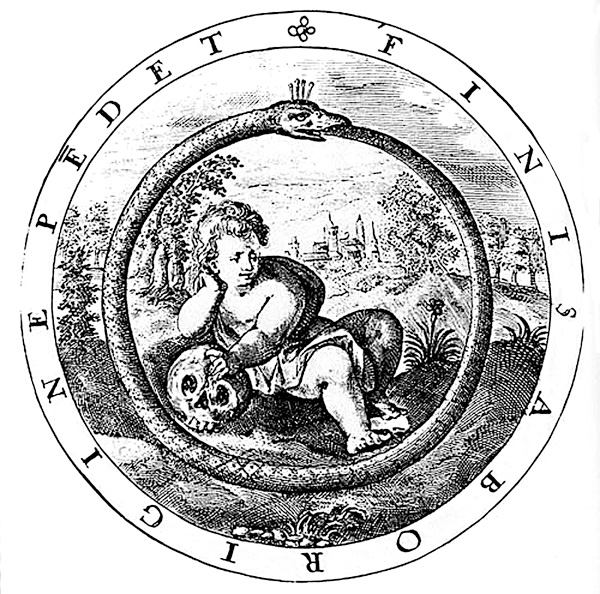
The question that dominates so much of J.R.R. Tolkien’s The Lord of the Rings is “What has the Hobbit in his pocket?” What wonderful fiction! Even more wonderful was the secret ring brought back from the East by tenth-century A.D. Arab travelers. This ring gave them immense power in commerce, science and mathematics; and after much resistance in the West, it eventually came to belong to everyone: the hollow ring of zero.
Arab merchants learned of zero from such Indian mathematicians as the Hindu philosopher Aryabhata (c. 476–550 A.D.) and the Jain philosopher Mahavira (c. 800–870 A.D.). But the idea was much older than that. Zero was probably transported to India by Greeks under the command of Alexander, who had learned about it during his conquest of Babylon in 331 B.C.
But the Babylonians didn’t invent zero, either. That was one of the great contributions of an even more ancient people: the Sumerians.a By the late fourth millennium B.C., the Sumerians had invented a record-keeping system to keep track of who donated what to each temple. They kept records by incising signs representing the kind and number of goods on clay tablets.b
In the earliest systems, one sign simply stood for one object, so to record 13 goats you had to make 13 marks. Then someone—perhaps a man Bel ban-Aplu, who is mentioned on an early tablet—had one of those insights that flash across the mind’s dark sky and light up the landscape of thought. Instead of writing numbers with strings of clumsy symbols (as the Romans were later to do), our ancient genius realized that where symbols were placed could also be used to indicate their value. So a row of three vertical wedges meant 3, and a “hook” ( ) meant 10, but a hook followed by three wedges stood for 13: Positional notation was born.
) meant 10, but a hook followed by three wedges stood for 13: Positional notation was born.
Along with positional notation, came its wonderful, terrible twin: zero. For example, if “13” (to use our conventional symbols) stands for thirteen (“one of the tens” plus “three of the ones”), how are we going to write one hundred and three? You need somehow to render “one of the hundreds” plus “none of the tens” plus “three of the ones.” You need a symbol for “no numbers in this column”—or zero. The Sumerians wrote it with two small diagonal wedges. Our hollow-ringed circle arose centuries after the Sumerians, in India; but write it how you will, you have now given a name, a sign, a kind of reality, to nothing.
Nothingness terrifies us. The vastness of space, the empty desert, vacant rooms, hollow eyes—all suggest death and annihilation. No wonder, then, that when Arab merchants brought back “Arabic” numerals (including 0) from India in the tenth century A.D., Europeans greeted them with fear and holy dread.
“Dangerous Saracen magic!” exclaimed the monk William of Malmesbury (c. 1090–1143). In 1299 the Florentines made it illegal to use Arabic numerals in account books. At the University of Padua, stationers were ordered to write the prices of books non per cifras sed par literas claros (“not in ciphers but in good clear letters”). In 1594 a canon in Antwerp warned merchants against using these dangerous imports in drawing up contracts. “The less anything is, the less we know it,” mused the English poet John Donne (1572–1631); “how invisible, how unintelligible a thing, then, is this Nothing!”

So zero went underground and over to the Dark Side, appearing in texts written by magicians and alchemists, who associated zero with Ouroboros, the worm that swallows its own tail.
Nonetheless, the tremendous reach and simplicity of Arabic numerals, positional notation and zero could not be ignored. As early as 1202, a brilliant merchant from Pisa called Fibonacci published a book explaining how to use Arabic numerals; among other things, he showed that you can add numbers to zero and multiply numbers by zero but that, strangely enough, you can’t divide numbers by zero. Almost three centuries later, in Florence, Luca Pacioli (sometimes called the father of accounting) invented double-entry bookkeeping, which not only made zero the Keeper of the Books (your credits and debits canceled each other out when you balanced your books on this fulcrum of nothing), but also meant that everything in the world, from bad eggs to good faith, was given a numerical value. The world was now firmly on the path we travel still, the mathematizing of nature.
Not long after John Donne delivered his meditation on the unintelligibility of “Nothing,” a new manifestation of zero began to take shape. In the late 17th century, the German philosopher Gottfried Leibniz and the British physicist and mathematician Sir Isaac Newton simultaneously (though independently) invented calculus, which is nothing more (and nothing less) than a means of measuring change—a mathematics that allows us to understand motion in the natural world.
After Euclid wrote his Elements of Geometry in Alexandria, Egypt, around 300 B.C., mathematicians understood straight lines and their slopes (the rise over the run). But nature moves in “curves”: An apple falling from a tree accelerates as it moves down, and acceleration often needs to be described mathematically as a curve; and of course the planets move in elliptically shaped orbits.
The inventors of calculus understood that such curves could be measured. For example, take a straight line that cuts through two points on a curve. The line’s slope is temptingly close, but not exactly equal, to the slope of the curve at the first point of intersection. As you move the second point of intersection along the curve toward the first, the slope of the straight line more and more closely approaches the slope of the curve at that first point of intersection. But what if the two points were to coincide? Ah, there’s the rub. For slope is rise divided by run, and were the two points to merge into one, the run would be zero (as, of course, would the rise)—and you can’t divide even zero by zero. Leibniz and Newton discovered that they could calculate the slope at any point along a curve as the limit of the ratios of measurable straight lines that get closer and closer to that point (but never reach it). In doing so, they discovered how to measure change itself, putting the workings of the universe into our hands!
Did zero’s odyssey end there? It had hardly begun. In the 400 years since calculus was invented, mathematics has grown beyond all bounds, stretching into new realms of number, giving us insights into unguessed-at structures in the atom, the cosmos and the mind—and it is always zero that teases us on and consolidates our gains. All the electronics around us—from phones to computers, from fuel-injection technology to television—run on a binary code of 0s and 1s, simply a way of recording whether a switch is off or on. Is this the ultimate manifestation of the ancient belief that the universe is the product of two opposed forces, Being and Nothingness? Not quite: For 1 itself can be derived wholly from zero!c
Is this zero, harbinger of the void and bearer of all our plenty, somewhere out there, in the world—or is it our invention, the dream of mortal minds? Perhaps the answer is in between, just as zero stands in the midst of negation and assertion. What we invent we then recognize as discovered, for the world is as much in us as we are in the world—and zero holds up its oval mirror to each.
MLA Citation
Footnotes
Sumer, the earliest major civilization in Mesopotamia, included the city-states of Eridu, Ur, Nippur and Uruk. Sumer is also a somewhat fluid place-name referring to the southernmost region of Mesopotamia in the third millennium B.C.
See Denise Schmandt-Besserat’s article on the origins of counting, “One Two … Three,” Archaeology Odyssey, September/October 2002.

